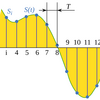24/96k setup
Hello all,
I record only classical music--piano, violin, etc. Now I am thinking of switching to 24/96. I do a lot of field work, so was thinking of buying Alesis Masterlink HD recorder. I use Pro Tools LE 6.1 with Audiomedia III card, and have a few questions:
1. How good is internal A/D D/A converter in Alesis? Is it worth to get external one?
- Read more about 24/96k setup
- 8 comments
- Log in or register to post comments
Back to 02R 96K
Hi folks!
This nice console has been on the market for some reasonable time already. The double wiring cards have been shipping also, 96k thru lightpipe is a reality.
I am a user of the old good 02R V2, capable of 44k/48k, limited to a/d 20 bits, but outputing 24 bit data.
- Read more about Back to 02R 96K
- 5 comments
- Log in or register to post comments
How do you take 24bit audio down to 16bit
I've read up about taking 24bit audio down to 16bit without loosing the sonic clarity of the original composision. My DAW software has the Apogee UV-22 algorithm included. Is this used or is there some other method? Or is this process considered as truncating or dithering? :w:
- Read more about How do you take 24bit audio down to 16bit
- 10 comments
- Log in or register to post comments
Recording on older 16 bit ADAT tape
I have a new 20 bit xt20 and have some tapes that I had formatted (with drums recorded at 16 bit) How do I make this work as I dont want to lose the old drum tracks. they're great!
- Read more about Recording on older 16 bit ADAT tape
- 5 comments
- Log in or register to post comments
To Normalize or Not, and 24 bit recording to 16 bit CD..
I have a couple simple questions I have never gotten a good response on...
1. Should I normalize tracks after I record them. Back in the day I normalized everything and I think I got some pretty good results. I have heard that normalization can introduce unwanted noise, but personally haven't run into that situation yet. If not, when should you normalize?
Cheap 24 bit or nicer 20 bit?
I have been thinking about this, and wanted some opinions. I am not interested in tech specs nearly as much as sound quality when it comes to my digital recording. So I was wondering, if I am using a fairly cheap 24 bit card (M-Audio Delta card) and compared it to say a Lucid ADA1000, which will only do 20 bits, what will I hear?
- Read more about Cheap 24 bit or nicer 20 bit?
- 4 comments
- Log in or register to post comments
Digiface 24 bit glitches
Hey All;
I'm in desperate need of some help troubleshooting my system-I've spent all weekend setting it up and I'm still having glitches.
I posted this down in DAWworld as well but thought I might catch a few eyes up here that don't check down there...
- Read more about Digiface 24 bit glitches
- 1 comment
- Log in or register to post comments
Who is Recording at 96k or greater?
...And why? Are you impressed?
My experiments up to 192k have not shown me there to be much if any difference, and I haven't had a customer ask me for it yet.
What about you all?
- Read more about Who is Recording at 96k or greater?
- 1 comment
- Log in or register to post comments
PT MIX X PT HD @ 44.1k/24bits
Hi friends!
Seems this is my first post on this forum page..
I use PT Mix 5.1.1 with 2 ADAT bridges light piped to an 02R, mostly at 44.1k/24 bits. I know this is weird and hard to quantize, but assuming two different situations that I present below.. what are the advantages in each case, in terms of percentage:
a) PT MIX x PT HD both at 44.1k/24 bits
- Read more about PT MIX X PT HD @ 44.1k/24bits
- 34 comments
- Log in or register to post comments
